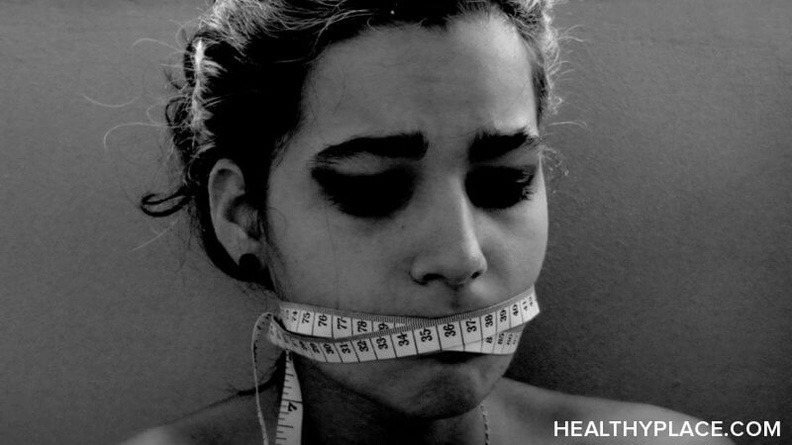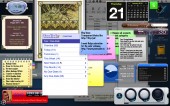My Pets
This is the very first time I have written a blog.
Maybe it is a good way to help myself get better. I hope so. I have a feeling I may be doing a lot of crying during this too. I think I will do this by subject, rather than chronological order.
The pets I had, and didn't:
I can't remember my life before age 5 or 6. There may be a few glimpses of family, Christmas, playing in the woods across the street, the kittens the black cat (who we later named Halloween) gave birth to under our trailer. Then I remember my dad taking all of the kittens and Halloween off somewhere to be dumped like garbage.
This was the first of many thoughtless actions from him. I'm sure there were many others though from before my memories start. I could imagine them, when my mother told me. I believed her too. She always told me the truth, unless it was to protect me. There came a point in my teenage years that she couldn't and didn't want to keep those things from me anymore.
The memories after this are clearer and don't seem so far away. We had chickens in a pen. My dad would chop their heads off and we would all laugh as the head-less bodies ran around. I didn't think this was at all strange, they were our food. We had a pig too, her name was Petunia. My mom loved her like a pet. My sister and I grew to love her as well. One day my dad invited some men over and they shot Petunia in the head. Later that evening, the men helped my dad dig a pit and position a large metal barrel in which they placed Petunia's corpse. They started a fire under the barrel. Because my father didn't tell us earlier what he was planning to do, I thought they were having some kind of satanic ritual. I didn't know we were going to eat Petunia. My mother cried the whole night. She, my sister and I did not eat any of the meat.
The interesting thing that happened after a few years was my dad decided to raise rabbits. Like the chickens, I had no bad feelings about him killing them. I think maybe I was so upset about the pig, because my mom was upset. When we had the rabbits, I remember my dad would give them a quick hit to the neck with the side of his hand. I started practicing this move on the babies. I never succeeded in killing them. I didn't get into trouble though. Everyone thought it was funny.
We did have a pet cat. He may have been one of Halloween's kittens. I can't remember. His name was Tubby. My dad loved him, although he would never say it until 14 years later when Tubby never came home again. He was a nice cat. When I respected the boundaries he made, but I rarely did until I was older. I used to bother Tubby a lot. I would try to kiss him on the head or mouth, and he hated it. I would keep harassing him until he got so tired of me he would attach himself to my face with his claws and teeth.
So now we move on to my sister's Siamese cat, Rambo. He was the cutest sweetest kitten. I actually got a puppy not long after he showed up. Howler was a lab/aussie mix. He and Rambo would play in the grass, hopping after each other. I didn't train Howler, I didn't know how. I was maybe 10. He was made to live outside where dogs belong, according to my dad. My mom would bring him in to sleep with me if it got too cold or rainy, Dad never knew about this. So after maybe 4 months, just enough time for me to fall in love with him, my dad decided he was sick of the puppy. He made me go with him to take Howler to Animal Control. I felt so helpless and crushed. I went to see Howler in the kennel, to say goodbye. He looked so scared and that made me feel horrible.
A year or so after that, Rambo started getting really mean. He only liked my sister. He was never neutered, big surprise, so he became a bad-ass tomcat. He wasn't so lucky though. He came home with one of his eyes popped. My dad wasn't going to put any money into him. I'm not sure why, but he made me go with him again to Animal Control. Of course during the ride there Rambo was very confused, but he was being nice. It made it so much harder. Dad was taking him there to be euthanized.
When my mom decided to bring in a black and white kitten, we didn't think he would be with us only a year. We named him Spike. There aren't many memories of him. He didn't do anything wrong really. He ended up with ear mites, and he started spraying in the house. Just like the others, my dad refused to spend any money getting him neutered or treating the mites, so Spike went were the other unwanted pets did. Dumped somewhere on someone else's street.
Many years later, my sister was given a kitten........actually Mom talked Dad into letting her have it. My mom's broth-in-law gave it to us. He was black, I wanted one of the tabby kitten's but I wasn't the one graduating from High School. She named him Onyx, then Pookie Bear. The little bastard would squeeze under my bedroom door at night and attack me constantly. I don't know why but he wanted to spend more time with me than her. Eventually she stopped taking care of him. I was cleaning his litter box which was still in her room, and I was feeding him. So, she "gave" him to me before she moved out. I named him Butt-head.
In the middle of this, I was allowed to buy a baby goat for $20. I had no intention of using her for anything other than companionship. I named her Winnie, and she was just like having a dog. She was so funny to watch. I had her for just over a year when my dad arranged for some guy who had other goats to take her from me. I visited her every week for about 2 months. She eventually forgot me.
Butt-head ended up being the greatest cat, he became my best friend. So, when my dad started threatening to take him off and dump him, I started to panic and I felt like I would do anything to keep him from taking my cat. My mom had recently left and was living someplace else. She convinced him to lay off and to leave my cat alone.
I eventually moved in with my mom and her "boyfriend" (they got married not long after this). This is a whole other story, but basically while there I got a dog, a Weimaraner named Willy. Things happened and I moved back in with my dad and his new "girlfriend". My dad made Willy live outside, which he was used to living inside and sleeping in my bed. Every night I heard Willy crying and howling. I couldn't sleep. Apart from this, my dad's girlfriend hated my cat, so I had to keep him locked in my bedroom. During this time, Butt-head started to claw the carpet under my door. So, my dad made me de-claw him. Which I am completely against. Once this was done, Butt-head started pulling the carpet up with his teeth. This lead to him being allowed in the rest of the house finally.
This actually is the end to my living with my dad, (but not the end to my mental prison of his control) since not long after my husband and I moved into an apartment. However, as the last 10 years have gone by, I have "collected" many cats. Some of them have come and gone, but there have always been at least 7 at once. I would say this is a kind of emotional problem I developed from having so many pets taken away from me. (I had 3 rats over my childhood too. None of them were taken from me, but they only live about 2 years.)
So since the cat collection had begun, I have been lectured repeatedly that I need to get rid of them and they cost too much and they take up too much time. I know I should tell my dad it is none of his business since I have my own home, and he doesn't pay for anything, but I can't get those words out. I love my pets, each of them individually. None of them go without anything they need. They are all spayed and neutered, they all get regular check-ups, they get plenty of food/water and affection.
Willy had to be let go 3 years ago because he had cancer, shortly after I brought home a hound mix that was turned-in to the place I work. His name is Bryan. I had always wanted a snake, and I finally got one about 5 years ago. I got him from a reptile rescue group. My dad will never understand the love I have for animals, and how they are so much more than just a dog, or just a cat or even just a snake.
APA Reference
(2010, January 26). My Pets, HealthyPlace. Retrieved
on 2025, September 24 from https://www.healthyplace.com/support-blogs/myblog/My-Pets

 Most people experience several of the following symptoms when feeling anxious:
Most people experience several of the following symptoms when feeling anxious:
 I woke up this morning feeling tired and fat. I tried to shake it off. I finally went for the walk that I've been intending to take for the past two weeks. I felt energized for half an hour before the crash began to really set in. I began to
I woke up this morning feeling tired and fat. I tried to shake it off. I finally went for the walk that I've been intending to take for the past two weeks. I felt energized for half an hour before the crash began to really set in. I began to 
 When you combine those tools with my tendency to run several dozen apps at the same time, and my apparent need to have a few thousand tabs open in my browser, you have a cacophony—usually, a sweet, blissful cacophony of busy-ness that is perfect for my fragmented attention span.
When you combine those tools with my tendency to run several dozen apps at the same time, and my apparent need to have a few thousand tabs open in my browser, you have a cacophony—usually, a sweet, blissful cacophony of busy-ness that is perfect for my fragmented attention span.
 The Oxford Dictionary defines crazy as insane, mad and foolish with synonyms like demented, deranged and unbalanced. This accurately defines the sensations I felt in the first year after my diagnosis. I grew anxious as I feared fear itself. My arms were covered with etched claw marks, some healing and flaking. I woke up with a startle each morning, surprised that I was still in my body. I suspected that during the night I would fail and morning would never come. Or, at times, I went without sleep, spending oodles of time on the internet doing research on my disorder. There had to be a cure.
The Oxford Dictionary defines crazy as insane, mad and foolish with synonyms like demented, deranged and unbalanced. This accurately defines the sensations I felt in the first year after my diagnosis. I grew anxious as I feared fear itself. My arms were covered with etched claw marks, some healing and flaking. I woke up with a startle each morning, surprised that I was still in my body. I suspected that during the night I would fail and morning would never come. Or, at times, I went without sleep, spending oodles of time on the internet doing research on my disorder. There had to be a cure.